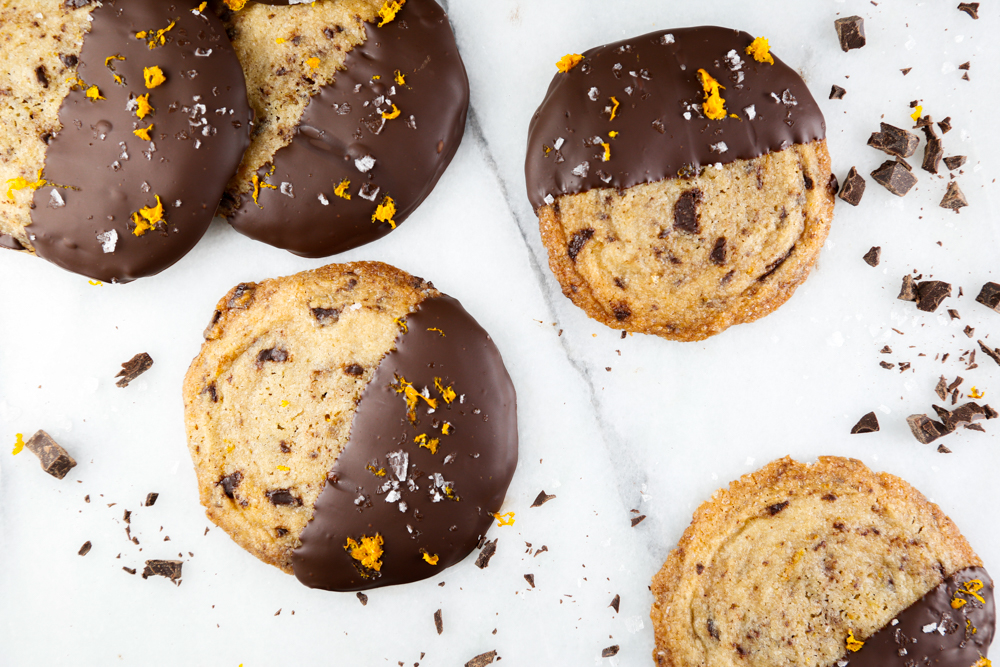Cookware and Utensils: How to Deal with Rust on Different Materials
2025 Apr 9th
Rust might not seem like a big deal at first, but if you’ve ever pulled out your favorite pan or serving spoon and found a reddish-brown layer staring back at you, you know how frustrating it can be. Rust isn’t just unsightly: it can mess with the performance of your cookware, shorten its lifespan, and just make the whole cooking experience feel... off.
While a lot of people associate rust mostly with cast iron, the truth is that stainless steel, aluminum, and other metals can all fall victim to corrosion. The good news? Rust removal from kitchen utensils and dishes is way easier than you might think.
Of course, different materials require different care and treatment: in this article, we’re focusing on how to remove rust from stainless steel and other common metal kitchen utensils and dishes. For rust issues related to black iron skillets, the approach is a bit different and requires specific care, but don't worry, we've got you covered if you need a complete guide on how to remove rust from your black iron skillet.
Why Is My Cookware Getting Rusty?
Rust doesn’t appear overnight. By the time you see those orange spots, your cookware has already been oxidizing for a while. The most common reasons? It usually comes down to moisture, improper storage, or simply wear and tear from everyday use. And it’s not just about pots and pans! Metal kitchen utensils like tongs, whisks, and ladles can also fall victim to rust if they’re not dried properly or left stored in damp drawers.
Investing in high-quality cookware is worth it. Brands like Emile Henry, Staub, Le Creuset, or Demeyere use premium materials that resist rust and stand the test of time.
But let’s be clear: even the best pots and pans need a little care! So while rust is a common issue, with the right habits and tools, it’s also completely preventable!
While moisture is the real enemy here, proper care is still essential! Even a little leftover humidity after washing can lead to rust, especially if your cookware is stacked or stored in a closed cabinet.
And of course, material quality also plays a big role. Cheaper cookware tends to chip and scratch more easily, which opens the door for rust to develop. If you've ever seen rust appear after just a few scrapes from a fork or spatula, chances are the coating or finish wasn’t built to last.
How to Clean Rust from Stainless Steel Cookware
Stainless steel is supposed to be resistant to rust, but as many of us have learned the hard way, resistant doesn’t mean immune. Over time, and especially with exposure to moisture or high iron content in tap water, even the most reliable stainless steel can develop those pesky orange spots. Whether it’s a pan, a baking tray, or a set of utensils, we’ve all found ourselves wondering: how do I remove rust from stainless steel without damaging the surface?
The good news is, it’s easier than it looks. When we notice rust on our stainless steel dishes or kitchen tools, our go-to solution is usually a gentle yet effective method using items most of us already have at home. Here’s what we recommend:
-
Start with baking soda and water
Make a paste with three parts baking soda and one part water. Apply it to the rusty area and let it sit for about 15–20 minutes. Then gently scrub with a soft cloth or non-abrasive sponge (no steel wool, please!) and rinse thoroughly. -
For more stubborn rust, try white vinegar
If baking soda doesn’t fully do the job, soaking the item in white vinegar for an hour or so can help break down the rust. After soaking, scrub again gently and rinse well. -
Always dry completely
This is key! Rust happens when moisture lingers. We always make sure to dry our stainless steel cookware and utensils completely, preferably with a towel, before putting them away.
We’ve found that these simple steps work not only for removing surface rust, but also for restoring the shine and functionality of stainless steel food equipment without relying on harsh chemicals. However, for a tougher job, we’ve also had great results with Bar Keepers Friend products, especially when dealing with stubborn rust on stainless steel surfaces.
How to Remove Rust from Metal Cookware
Not all cookware is created equal, and when it comes to rust, copper, aluminum, and enamel-coated pots and pans each have their own quirks. Over the years, we’ve learned that these materials can be both beautiful and a little more delicate, so the way we clean them needs to reflect that.
Here’s how we usually tackle rust on these types of cookware:
Copper Cookware
Copper is a favorite in many kitchens (including ours!) for its beauty and heat conductivity. But it’s also prone to oxidation. If you spot rust or tarnish, a gentle paste of lemon juice and salt works wonders. Rub the mixture on the rusty areas, let it sit a few minutes, then rinse and dry thoroughly. For more shine, we sometimes finish with a tiny bit of baking soda mixed into the lemon for extra scrubbing power.
Aluminum Pots and Pans
Aluminum doesn’t rust in the traditional sense, but it can develop a dull, greyish layer or small spots that look like corrosion. We’ve found that a mixture of white vinegar and water (equal parts) boiled in the pan can help lift discoloration. Let it cool, then scrub gently with a soft sponge.
Enamel-Coated Cookware
That glossy enamel coating looks tough, but it can chip, and where there’s a chip, rust can follow. If you see small rust spots on your enamel cookware, treat them carefully: use baking soda and water paste, applied gently with a soft cloth. Avoid anything abrasive that could worsen the chip. And if the rust is inside the cooking surface, it might be time to consider if that item is still food-safe.
How to Clean Rust from Pots and Pans
Rust on pots and pans usually shows up when we least expect it, often after they've been stored a bit too long or put away without being fully dry. But don’t worry: removing rust from cookware doesn’t have to be a big deal. With just a few household basics and a bit of care, it’s surprisingly easy to get your pots and pans back in shape.
Step-by-step: our go-to method
-
Start with baking soda
Make a paste using baking soda and just a bit of water. Apply it to the rusty areas and let it sit for 15–20 minutes. Then scrub gently using a soft sponge or a non-scratch pad. If needed, repeat the process a couple of times. -
Use white vinegar for extra power
For tougher rust, soak the affected area in white vinegar for 30 minutes to an hour. Vinegar helps break down the rust, making it easier to scrub off. After soaking, go back in with the baking soda paste, it helps neutralize the vinegar and remove any remaining stains. -
Rinse and dry thoroughly
Always, always dry your cookware completely before putting it away. We usually leave it out to air-dry a few minutes, then follow up with a clean towel to catch any hidden moisture.
These steps work well on a variety of cookware, from simple everyday pans to more delicate pieces. Whether you're dealing with a bit of rust on the rim or a more stubborn patch underneath, getting rid of rust on cookware is possible with ingredients you probably already have in your kitchen.
And the best part? You don’t need anything fancy, just common household items and a bit of scrubbing can go a long way! However, if you’re looking for extra help, you can always explore some of our favorite kitchen cleaning supplies to make the job even easier.
How to Prevent Rust on Cookware and Utensils
Let’s be honest: cleaning rust is never fun!
That’s why we do our best to avoid it altogether. Over time, we’ve figured out a few simple habits that make a big difference in keeping our cookware and utensils rust-free.
First of all, always wash and dry thoroughly. It sounds basic, but it’s the single most important step. After washing your pots, pans, or utensils, dry them completely with a towel, don’t leave them to air-dry. Moisture is what kickstarts rust, especially when items are stored in closed spaces.
Second, store everything in a dry, well-ventilated space. Avoid stacking wet items or keeping them in places that trap humidity, like tightly packed drawers or closed cabinets. If possible, hang your pans or leave a bit of space between stacked items so air can circulate.
Pay attention to coatings and finishes as well. If your pan has an enamel or non-stick layer, check it from time to time. A chipped or scratched surface can expose the metal underneath, making it more vulnerable to rust. If that happens, be extra gentle while cleaning and avoid anything abrasive.
By sticking to these habits, we’ve saved plenty of cookware from early retirement. And once they become part of your regular routine, preventing rust is almost effortless!
FAQ
Can I still use my cookware if it has rust?
If it’s just a small spot on the surface, yes, you can clean it off and continue using the item. However, if the rust has deeply pitted the metal or compromised the coating, it’s safer to replace it.
What’s the safest way to remove rust from dishes and utensils?
We recommend using baking soda or vinegar, followed by gentle scrubbing with a non-abrasive sponge. These methods are effective and food safe, without harsh chemicals.
Can I use vinegar and baking soda on any type of cookware?
Almost all, yes! But avoid vinegar on aluminum and always test a small area first if you’re not sure. Also, steer clear of abrasive scrubbing on enamel or non-stick coatings.
How can I store my cookware to avoid rust?
Make sure everything is completely dry before storing. Keep items in a well ventilated area, and avoid stacking them tightly especially if you live in a humid environment.
What utensils are more likely to rust?
Low grade stainless steel, carbon steel, and utensils with worn coatings are more prone to rusting, especially if they're often exposed to moisture or acidic foods. On the other hand, those with a full protective enamel coating are much more resistant to rust and corrosion, even with regular use. Investing in better materials really pays off over time.
Final Thoughts
Rust might be stubborn, but it’s not unbeatable. With a few simple habits and the right cleaning tricks, your cookware and utensils can stay in top shape for years. Trust us, once rust prevention becomes part of your routine, you’ll barely have to think about it.




